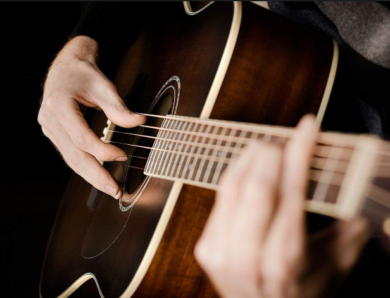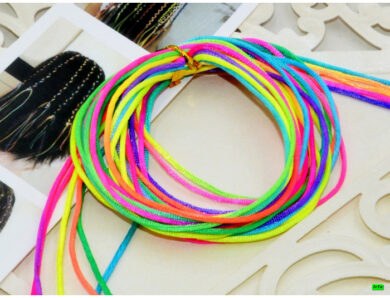Band saw on wood: sharpening and wiring of band saw teeth, video
Band saws are used as cutting tools in band saws. Represent a metal tape with applied teeth. They have a lot of advantages.
In comparison with circular tools, the width of the saw at the band saw is much smaller, what, in turn, has a positive effect on sawing expensive wood or processing metal of elite brand.
The band saw has a good cutting speed, while providing excellent quality of cut faces. With its help it is possible to cut absolutely any preparation.
That the saw had the above characteristics, it is necessary to carry out its cultivation and sharpening in due time and qualitatively.
In branded centers, the cost of sharpening saws is low, but the quality of the work is not always pleasing. Therefore, we will try to help you in this matter, if you decide to sharpen and distribute the band saw.
The composition of the band saw
Saws for woodworking are stamped from tool steel, which has a hardness 45 HRC.
For metal processing, domestic manufacturers use 9HF steel, V2F, foreign use - C 75 other. Teeth of saws with use of the above-described steel due to hardening by high-frequency currents get the highest hardness. Quite often when working with metal tape bimetallic tool is used.
Bimetallic fabric is made of so-called spring steel, and the belt with teeth - from a metal alloy with high admixtures of cobalt and tungsten. This high-speed alloy is connected to the base of the saw by an electron beam.
Teeth and angles of their sharpening
Band saws have different tooth geometries: it is influenced by the properties and type of material, sprayed. So, for work with wood apply a joiner's saw, for processing of logs, dividing. In each species, respectively, the geometry of the tooth.
In band saws, designed to work with wood, the sharpening angle is determined by the manufacturer, but the following is characteristic - the harder the material, so the front corner should be smaller.
For saws with a constant pitch of the teeth when working with metal are characterized by two forms of teeth - "positive front angle" and standard. Standard teeth are used to work with thin-walled materials, and teeth with a positive front angle - for sawing thick-walled metal.
For blanks of small thickened walls (pipes, sheet metal) use saws with a small pitch of the teeth - otherwise there is a risk of breaking or damaging the tooth. It is better to work with thick-walled blanks with a tool with a small number of teeth per inch.
To remove the effect of oscillations, a number of beers are made with a variable pitch of teeth.
Breeding teeth band saws
When working with the tool, the quality of the cutting edge of the teeth inevitably decreases. Therefore, proper sharpening and cultivation of band saws is an integral part of the cutting workflow.
Remember, divorce must be carried out before sharpening, and not after.
Breeding is the process of bending the teeth to the sides to reduce friction and clamp the blade. There are three types of wiring:
- brush - you need to leave every third tooth in its original form. Used in tools, for cutting especially hard alloys and materials;
- classic - teeth must be bent to the left and right strictly alternately;
- wavy - each tooth bends to a certain value, the result is a wave. This type of wiring is the most difficult.
You have to remember, that at divorce bend two thirds or a third from a tooth top, not the whole tooth.
The recommended values for divorce are approximately 0,3 to 0,7 millimeters. Distribution is carried out by means of adjustable special tools.
Proper tool sharpening process
Proven in practice, that over 80 The percentage of tool breakage occurs due to improper sharpening of the teeth of band saws. The need for sharpening is determined by eye - the condition of the walls of the saw or the appearance of the teeth themselves.
Sharpening wheels for band saws are selected depending on the hardness of the tooth. A corundum circle is used to sharpen a tool made of tool steel. Bimetal saws are sharpened with diamond or borazon abrasive. The shape of the circle for the tool should be determined based on the parameters of the saw. It can be cupped, profile, poppet ??and flat.
Before using the dust in the work, it is necessary to keep it suspended for about eleven hours..
Requirements for sharpening the tool with your own hands:
- it is necessary to evenly remove the metal on the tooth profile;
- eliminate excessive circuit pressure (this can damage the tooth);
- mandatory use of coolant;
- ensure the preservation of the geometry of the tooth;
- preventing the formation of burrs.
The standard instruction says, that sharpening of the tool should be carried out or on the front face of the tooth, or on the back, and on the front. In practice, many folk craftsmen, and professionals sharpen exclusively on the back face - yes, in their opinion, it's more convenient.
This tool is quite unpretentious in terms of sharpening, despite a lot of requirements and rules. Sharpening can be done manually, and with the help of a special sharpening device; to apply for processing various on a material and the form of a circle, etc..
Before, how to sharpen the tool you need to get acquainted with the main types of this operation. You can also watch videos online.
types of sharpening
-
Full profile view. Is the highest quality species, is carried out automatically on special. machines. Exactly selected elbor circle, passes in one motion the entire interdental cavity together with the faces of adjacent teeth. This eliminates the formation of awkward shapes at the base of the teeth. The only disadvantage of this type of sharpening is the need to have a certain number of different circles for saws with different profiles.
- Sharpening the edges of the cutting part. It can be done manually or on a professional machine. If you want to sharpen the machine, you need to choose the right circle - in most cases it is flat samples. Based on practice, apply to special. sharpening equipment is needed only in those cases, when the amount of work is very large. With a small amount of work it is better to sharpen by hand - on a conventional machine or with the use of an engraver. When performing sharpening work, for security purposes, it is necessary to use goggles or a mask.
If there is no engraver, you don't have a machine, then you can sharpen the tool in the old-fashioned way - using a file. With diligent and regular operation, the skill of high-quality manual sharpening will appear very quickly.
Tips from professionals
- When sharpening a tool on a machine, before sharpening it is necessary to be convinced of correctness of an arrangement of a sharpening disk concerning a saw.
- It is necessary to remove such a layer of metal from the sinuses, to ensure that all microcracks are removed.
- If the saw was operated without quality maintenance, longer allotted by the manufacturer, layer of metal, removed for one sharpening, need to be increased.
- As a reference, always use a new tool to check the sharpening results.
- The shape of the cutting part of the saw is a parameter that has been verified and developed over the years. Therefore it is not necessary to deduce the parameters and hopes for good quality of work.
- If you follow the rules of operation and the requirements of the manufacturer's band saw will serve you until then, until its width decreases to 65 percent of the original denomination. The width decreases during re-sharpening of teeth.
- Be sure to remove any burrs while sharpening the tool, otherwise it will lead to the formation of microcracks in the process of spraying materials.
- At the end of the work, the tool must be immediately cleaned of sawdust and resin, and before sharpening it is necessary to examine dust carefully. Otherwise clogged shavings sharpening disk, which will lead to improper sharpening of the band saw.
Mistakes, arising in the process of sharpening
Error № 1. burnt hollows of saw teeth.
The reason lies in the excessive pressure of the sharpening wheel on the saw. The result will be a rapid blunting of the tool.
Error 2. Imperfection of the geometry of the sinuses and the wrong angle.
A number of conditions can lead to this error:
- eccentric wear of the sharpening device;
- error calibrating inclined angle;
- incorrectly selected sharpening wheel profile.
Now you know, how to sharpen a band saw properly, and what tools and instruments may be needed for this. You can also find additional videos of this process on the Internet.




